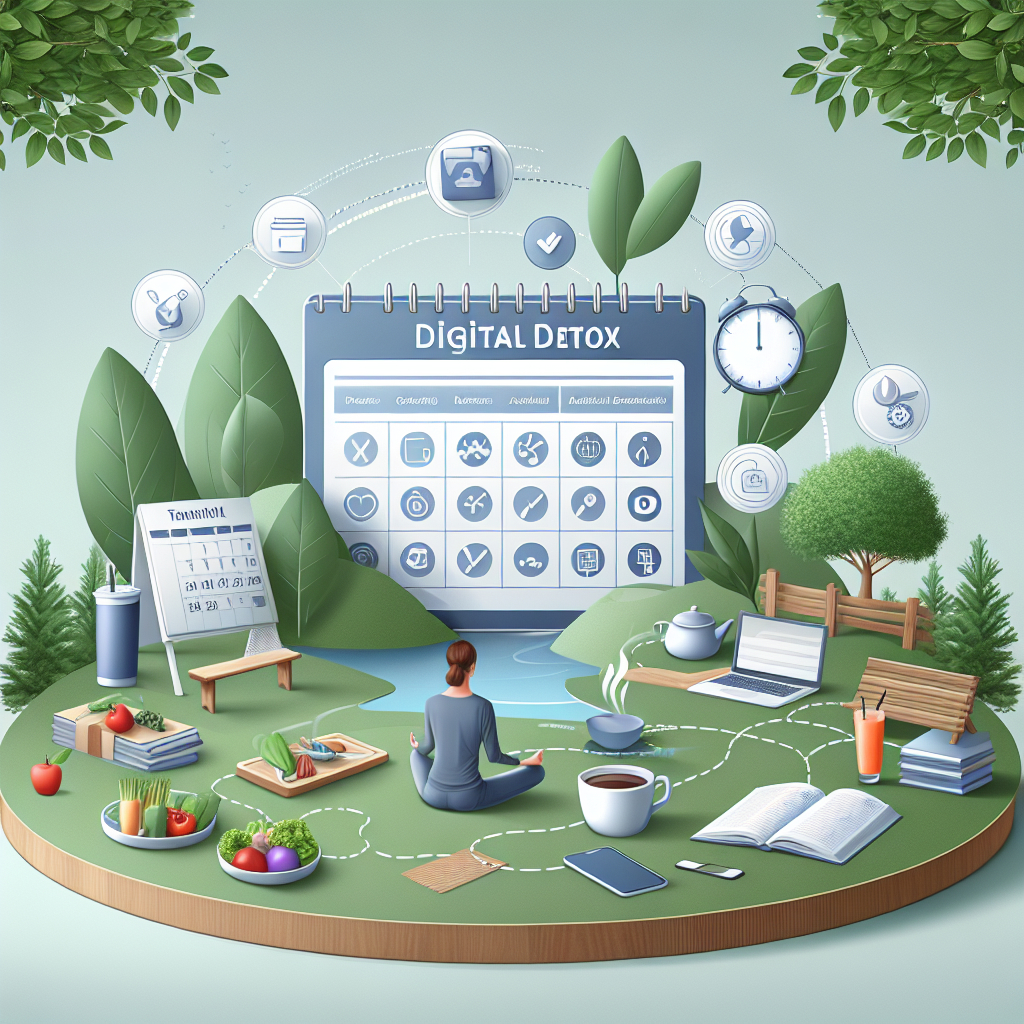In an era where our lives are increasingly intertwined with digital devices, the concept of a digital detox has gained significant traction. A digital detox involves taking a break from digital devices to focus on real-life interactions and activities. This article will guide you through creating a digital detox plan that works for you, helping you reclaim your time and mental well-being.
Understanding the Need for a Digital Detox
Before diving into the steps of creating a digital detox plan, it’s essential to understand why you might need one. The constant barrage of notifications, emails, and social media updates can lead to digital fatigue, stress, and even mental health issues. Studies have shown that excessive screen time can negatively impact sleep, productivity, and overall well-being.
Signs You Need a Digital Detox
Recognizing the signs that you need a digital detox is the first step towards making a change. Here are some indicators:
- Constant Distraction: You find it hard to focus on tasks without checking your phone or computer.
- Sleep Issues: You have trouble falling asleep or staying asleep due to late-night screen time.
- Decreased Productivity: Your work or study performance is suffering because of frequent digital interruptions.
- Social Withdrawal: You prefer interacting online rather than face-to-face.
- Mental Fatigue: You feel mentally exhausted from the constant influx of information.
Steps to Create a Digital Detox Plan
Creating a digital detox plan tailored to your needs involves several steps. Here’s a comprehensive guide to help you get started:
1. Set Clear Goals
Determine what you want to achieve with your digital detox. Are you looking to reduce stress, improve sleep, or increase productivity? Having clear goals will help you stay motivated and measure your progress.
2. Assess Your Digital Usage
Track your screen time and identify which apps or activities consume most of your time. This will help you understand your digital habits and pinpoint areas that need change.
3. Create Boundaries
Establish specific times and places where digital device usage is off-limits. For example, you might decide to avoid screens during meals or within an hour of bedtime.
4. Gradual Reduction
Instead of going cold turkey, gradually reduce your screen time. Start by cutting down on non-essential activities and slowly work your way towards more significant changes.
5. Replace Digital Activities with Offline Alternatives
Find offline activities that you enjoy and can engage in during your digital detox. Reading, exercising, and spending time with loved ones are excellent alternatives.
6. Use Technology to Your Advantage
Ironically, technology can help you detox from technology. Use apps that track and limit your screen time, or set up reminders to take breaks from your devices.
7. Seek Support
Inform friends and family about your digital detox plan. Their support can be invaluable, and they might even join you in your efforts.
Maintaining a Balanced Digital Life
Once you’ve completed your digital detox, it’s crucial to maintain a balanced digital life. Here are some tips to help you sustain the benefits of your detox:
1. Regular Digital Breaks
Incorporate regular digital breaks into your routine. Short, frequent breaks can help prevent digital fatigue and keep you focused.
2. Mindful Usage
Be mindful of your digital usage. Ask yourself if the time spent on your device is productive or necessary. This awareness can help you make more intentional choices.
3. Prioritize Real-Life Interactions
Make an effort to prioritize face-to-face interactions over digital ones. Building and maintaining real-life relationships is essential for mental and emotional well-being.
4. Set Long-Term Goals
Continue setting long-term goals for your digital usage. Whether it’s limiting social media time or reducing overall screen time, having goals will keep you on track.
Conclusion
Creating a digital detox plan that works for you is a personal journey. It requires self-awareness, commitment, and a willingness to make changes. By understanding the need for a digital detox, setting clear goals, and following the steps outlined in this article, you can reclaim your time, improve your well-being, and maintain a healthier relationship with technology.



